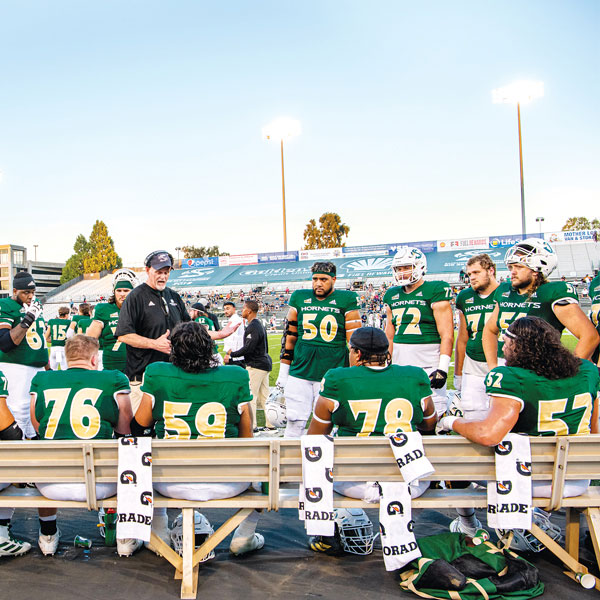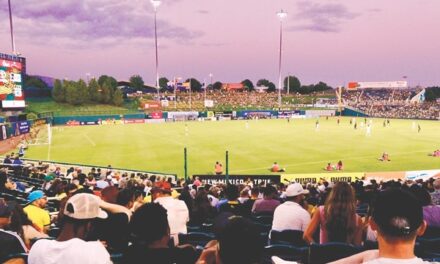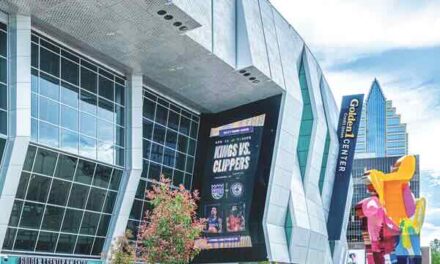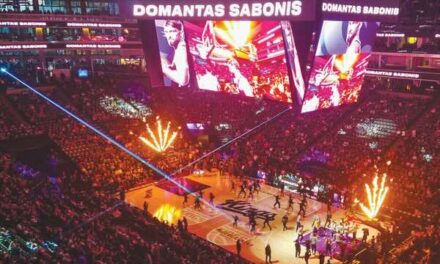Some of us remember when beating UC Davis meant everything to Sacramento State’s football team. But with success defined by one game, victory was impossible. Between 1970 and 1987, the Aggies defeated the Hornets 18 consecutive times.
The annual mismatch made UC Davis coach Jim Sochor smile when he heard the word “rivalry.” He would say, “It’s not a rivalry until they beat us.”
Sochor died in 2015 at age 77. He lived long enough to see some improvements in Sac State’s football program, but not many. Since 2000, Davis has won the Causeway Classic 15 times.

Now things are changing, maybe. When Sac State plays Davis Nov. 19 at Fred Anderson Field, the home team will seek its third straight win against the guest from Yolo County.
These are fun times for Sac State football. The Hornets have won the Big Sky Conference title twice. It’s the minor leagues, but that’s fine with Sac State. “We’re very happy in the Big Sky,” school President Robert Nelsen tells me. “We’re getting good exposure.”
Sac State was undefeated last year in the Big Sky. Unfortunately, when the first playoff game arrived, the Hornets were out-manned by South Dakota State 24-19. The dream of national honors vanished in about three hours.
For people who love Sac State, there’s a tough question nobody wants to ask. I love the place, attended classes there and hope to graduate someday. Here’s the question: With success restricted to second-tier titles, why stick with football?
For almost 70 years, Sac State struggled to win in the bush leagues of college football. When the program debuted in 1954, the Hornets headed north to play Humboldt State, crossed the Bay Bridge to play San Francisco State and bused south for games against UC Santa Barbara and Long Beach State.
Today, those schools don’t waste resources on football. Their sports dollars go into basketball, soccer, swimming and volleyball. State schools in Chico, Sonoma, Hayward, Northridge, Fullerton and Los Angeles dropped football. Others never played. Only three UC campuses support offensive lines.
But when I ask Nelsen about eliminating football, he answers before I finish the question. “No, absolutely not,” he says. “We’re going to keep football. We’re increasing the number of summer scholarships, increasing the nutrition program. We are not dropping football.”
Still, it’s a reasonable discussion. College football has reached the precipice of absurdity. At the highest levels, it’s an entertainment product amputated from an academic mission.
The Big Ten Conference recently signed a TV deal that brings $1 billion a year to members, soon to include UCLA and USC. The Pacific-12 Conference, once the pride of the west, disintegrates.
“Everything on the horizon is kind of murky now,” Nelsen says. “Schools everywhere are re-thinking everything about college football.”
Those thoughts revolve around money. Sac State doesn’t have much. Its entire athletics budget of $15.3 million would barely cover the salary, benefits and expenses of USC’s new head football coach.
The Big Sky represents the highest level ever reached by Sac State, but it’s subterranean. The Big Sky is relegated to the Football Championship Subdivision, encompassing 130 schools spread across Montana, Idaho, the Midwest, East and South, mostly backwaters. (There are exceptions. The subdivision includes the Ivy League.)
Sac State can be seen as a misfit, an overgrown child lumbering in the sandbox with teams from Pocatello, Missoula, Ogden, Flagstaff and Greeley. The Hornets belong in the big leagues, Division I, the Football Bowl Subdivision, but can’t get there. Sac State suffers from pitiful infrastructure and decades of community indifference.
Here’s another question: Would a higher competitive level hurt Sac State?
Big time bowl football demands classy stadiums and arenas. It requires substantial budgets, high priced coaches, rich donor clubs and lofty attendance.
“We doubled the number of ticket holders this year,” Nelsen says. “We want to have better training facilities. We want to expand. We’re looking at a basketball arena, either to build a new one or expand the one we have.”
Terrific. But first let’s make it three straight over Davis.
R.E. Graswich can be reached at regraswich@icloud.com. Follow us on Facebook, Twitter and Instagram: @insidesacramento.















